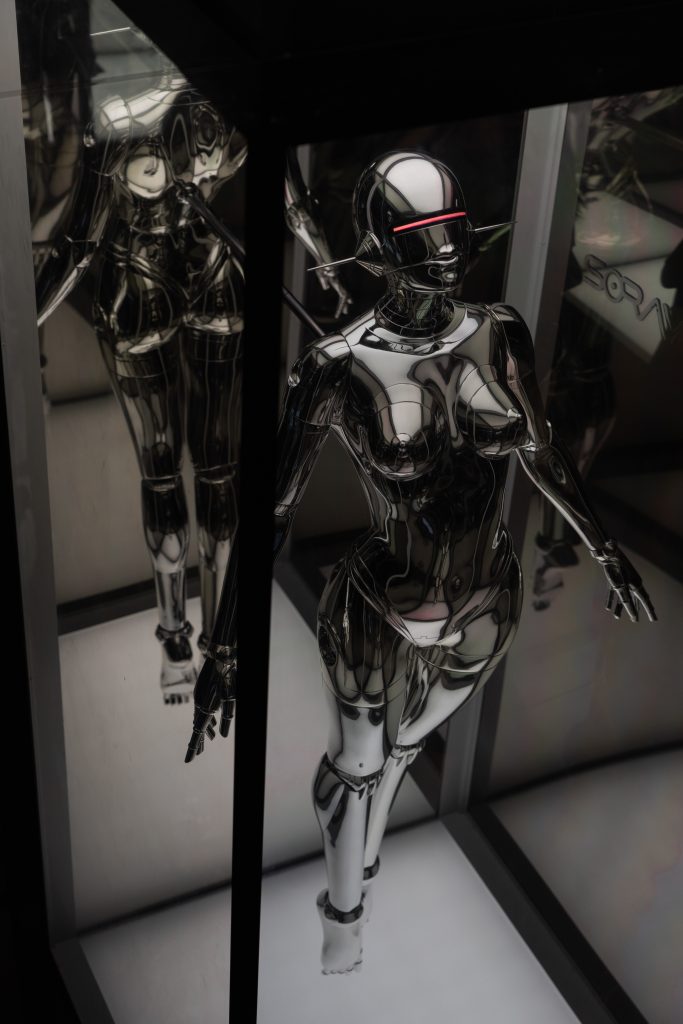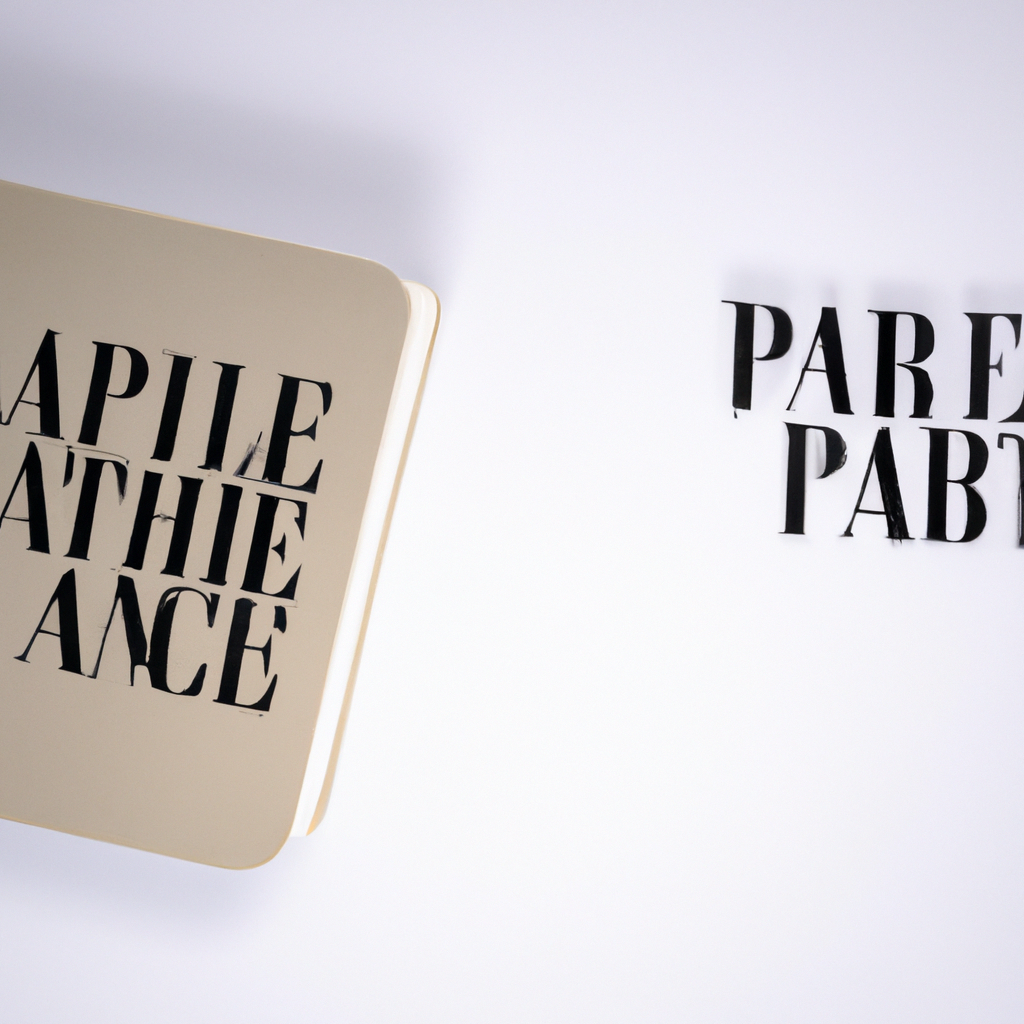Imagine you’ve poured countless hours and immense effort into developing an incredible AI project, only to have it snatched away by someone else. It’s a nightmare scenario for any AI enthusiast. In this article, we will explore some effective strategies to safeguard your AI project from theft, ensuring that your hard work remains in your hands and your hands alone. So, whether you’re a seasoned AI developer or just starting out, read on to discover how to secure your valuable AI creations.

Choose Strong Passwords and Secure Your Accounts
One of the simplest yet most effective ways to protect your accounts and keep your information secure is by choosing strong passwords. When creating a password, it’s important to choose one that is unique and not easily guessable. Avoid using common words, personal information, or predictable patterns.
To make your passwords strong, consider using a combination of uppercase and lowercase letters, numbers, and special characters. The longer and more complex your password is, the more difficult it will be for hackers to crack.
Additionally, it’s crucial to secure your accounts by enabling two-factor authentication whenever possible. Two-factor authentication adds an extra layer of security by requiring a second form of verification, such as a unique code sent to your mobile device, in addition to your password.
Regularly Update Passwords
While creating strong passwords is essential, it’s equally important to regularly update them. Reusing passwords across multiple accounts or keeping the same password for an extended period can increase the risk of unauthorized access. Change your passwords periodically, ideally every three to six months, to minimize the chances of being compromised.
Implement Secure Account Recovery Processes
In case you ever forget your password or need to recover your account, it’s important to have secure account recovery processes in place. This involves setting up alternate email addresses or providing answers to security questions that are difficult for others to guess. By ensuring that account recovery processes are strong and not easily bypassed, you can further protect your accounts from unauthorized access.
Secure Your AI Project Codebase
The codebase of your AI project is the heart of your intellectual property, and it should be guarded against theft or unauthorized access. Implementing code access controls is crucial for limiting who can access and modify the code. By granting access only to trusted individuals who have a legitimate need, you can significantly reduce the risk of unauthorized actions.
Using encryption techniques can also enhance the security of your codebase. Encrypting the codebase will render it unreadable to anyone without the decryption key, even if they manage to gain unauthorized access. This adds an extra layer of protection, ensuring that even if the code is stolen, it remains unusable.
Securing your source code repositories is equally important. Choose reputable hosting platforms that offer robust security features, such as access controls, encryption, and secure backups. Regularly update your repositories to ensure that any vulnerabilities or security flaws are addressed promptly.

Protect Your Intellectual Property
When working on an AI project, it’s essential to protect your intellectual property. Intellectual property protection can help safeguard your ideas, inventions, and creative works from being stolen or used without permission. Consider registering your project for copyrights, trademarks, or patents, depending on the nature of your work.
Labeling and protecting confidential information is an integral part of protecting your intellectual property. Clearly mark any sensitive or proprietary information within your project as confidential. Take measures to limit access to this information only to individuals who need it and have signed confidentiality agreements.
Using non-disclosure agreements (NDAs) can be an effective way to protect your intellectual property when collaborating with others. NDAs establish legal obligations for the involved parties to keep your confidential information confidential. Ensure that NDAs are signed before sharing any sensitive information with third parties.
Implement Robust Network Security Measures
To safeguard your AI project, you must implement robust network security measures. Firewalls and intrusion detection systems are essential tools for protecting your network against unauthorized access and potential attacks. Firewalls act as a barrier between your network and the outside world, monitoring and controlling incoming and outgoing traffic. Intrusion detection systems help detect and respond to suspicious activities or potential breaches.
Secure network configuration and devices should also be a priority. Regularly update and patch your network devices, such as routers and switches, to address any security vulnerabilities. Configure your network devices with strong passwords, disable unnecessary services, and establish strict access controls.
Stay vigilant about applying security patches to your network devices and keep them up to date. Security patches often include important fixes for known vulnerabilities, so ensuring they are regularly installed helps safeguard your network from potential threats.

Create a Secure Development Environment
Establishing a secure development environment is crucial for safeguarding your AI project throughout its lifecycle. This involves training and educating your staff on security practices to ensure that they are aware of potential risks and understand their responsibilities in protecting sensitive information.
Control and monitor access to your development environment to limit the exposure of your AI project. Grant access only to necessary personnel and regularly review and revoke access privileges for those who no longer require them. By managing access tightly, you reduce the risk of unauthorized activity.
Regularly testing and auditing your security measures is essential. Perform penetration testing and vulnerability assessments to identify any weaknesses or vulnerabilities in your development environment. Regular security audits can help you proactively address any potential threats and vulnerabilities.
Adopt Data Protection Measures
Protecting the data associated with your AI project is crucial, as it may contain sensitive or confidential information. Implement data access controls to restrict access to data only to authorized individuals who need it for legitimate purposes. By limiting access to sensitive data, you minimize the risk of unauthorized disclosure or misuse.
Anonymizing or pseudonymizing sensitive data adds an additional layer of protection. By removing or replacing personally identifiable information, you reduce the risk of the data being linked back to individuals, even if it is somehow accessed without authorization.
To ensure the security of data in transit and at rest, it’s important to encrypt it. Using encryption algorithms and secure protocols, such as Transport Layer Security (TLS), can prevent unauthorized access to the data while it is being transmitted and when it is stored.

Establish Legal Protections
Consulting with intellectual property lawyers can provide valuable guidance and legal protection for your AI project. Intellectual property lawyers can help you understand your rights, navigate complex legal frameworks, and take appropriate legal actions to protect your intellectual property.
Drafting strong contracts and licensing agreements is essential when collaborating with others on your AI project. Clearly define the ownership, usage rights, and confidentiality obligations of all parties involved to avoid disputes and protect your intellectual property.
Consider trade secret protection for sensitive aspects of your AI project. Trade secrets can include confidential algorithms, unique methodologies, or proprietary technologies. By taking measures to keep these secrets confidential and limiting their disclosure, you can maintain a competitive advantage and protect your AI project.
Be Mindful of Third-Party Collaborations
Collaborating with third parties can enhance your AI project but also introduces potential risks. Before entering into any collaboration, conduct due diligence to evaluate the reputation, security practices, and trustworthiness of the other party. Ensure they have a history of maintaining the highest standards of security and protecting intellectual property.
Using non-disclosure and confidentiality agreements when collaborating with third parties is essential to protect your sensitive information. These agreements establish legal obligations and responsibilities, ensuring that your confidential information remains confidential, even when shared with external parties.
Limit access to sensitive information when collaborating with third parties. Only share what is necessary for the collaboration, and regularly review and reassess access privileges to align with the changing needs of the project. By limiting access, you mitigate the risk of unauthorized disclosure or misuse.

Monitor and Detect Unauthorized Activities
Implementing logging and monitoring systems is crucial for detecting and responding to unauthorized activities. These systems allow you to keep track of who accesses your AI project and monitor their activities. By analyzing logs, you can identify any suspicious or unauthorized activity, enabling you to take appropriate actions promptly.
Regularly reviewing logs for suspicious activity is essential. Create a mechanism to review logs on a regular basis and establish a process for understanding and investigating any anomalies. By actively monitoring and reviewing logs, you can quickly detect and mitigate potential security breaches or unauthorized access.
Intrusion detection systems play a vital role in monitoring and detecting unauthorized activities. These systems can detect patterns and behaviors that indicate potential intrusions or attacks. By implementing intrusion detection systems, you can proactively respond to security threats and minimize the impact.
Maintain Continual Security Updates
Staying informed about security threats and vulnerabilities is crucial for maintaining the security of your AI project. Regularly monitor industry news, security bulletins, and updates from relevant authorities to stay up to date with the latest security risks and mitigation strategies.
Regularly update your security software and tools to ensure they are equipped to handle emerging threats. Security software, such as antivirus programs and firewalls, should be kept up to date to provide the highest level of protection. Regular updates patch any known vulnerabilities and ensure that your AI project remains secure.
Performing regular security audits is essential for identifying any potential weaknesses or vulnerabilities in your systems. By conducting thorough assessments of your security measures, you can identify areas that require improvement and take appropriate actions to address any issues. Regular security audits help ensure that your AI project remains protected against evolving threats.
By following these comprehensive steps, you can significantly increase the security of your AI project and protect it from being stolen or compromised. Remember, maintaining consistent and robust security practices is an ongoing effort and should be prioritized throughout the entire lifecycle of your project.










